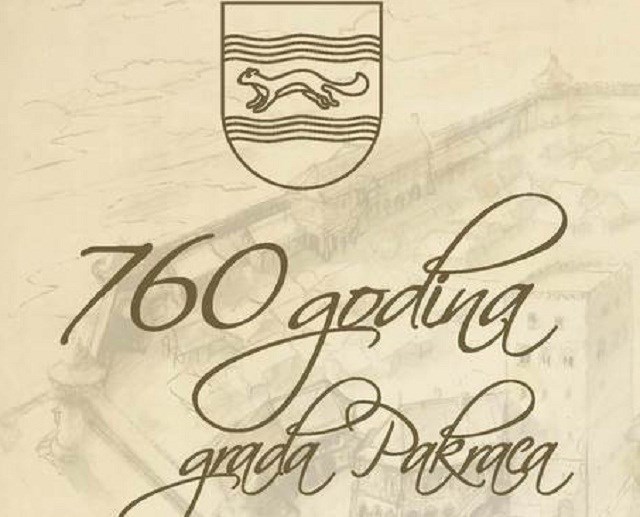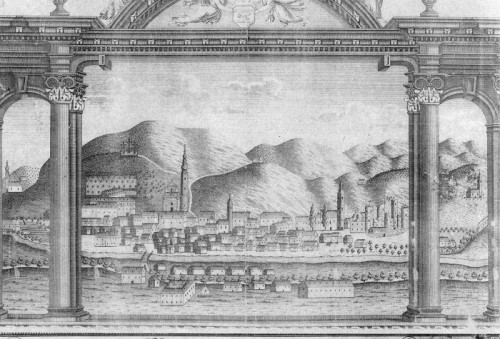760 godina grada Pakraca Traditional Geocache
-
Difficulty:
-

-
Terrain:
-

Size:  (regular)
(regular)
Please note Use of geocaching.com services is subject to the terms and conditions
in our disclaimer.
Cache povodom 760 godina od prvog spomena grada Pakraca objavljen za Međunardoni dan muzeja.
A cache dedicated to 760th anniversary of the first mention of city of Pakrac published on International museum day.

HR
Povijest Pakraca i okolice seže do u mlađe kameno doba iz kojeg potječu najstariji arheološki nalazi. Najpoznatiji nalazi rimskog razdoblja su nadgrobni spomenik-stela iz Brusnika koja se čuva u Arheološkom muzeju u Zagrebu, te nadgrobni spomenik pripadniku Maurske kohorte, pronađen u selu Kusonje (vidi waypoint).
Pakrac vjerojatno u 13.st. postaje moćna i snažna utvrda kojom su gospodarili ivanovci. Određene rekonstrukcije nastale prema zapisima putopisaca, te analogijama u obrambenoj arhitekturi tog doba, govore da je utvrda imala oblik nepravilnog peterokuta, jakih debelih zidova (vidi waypoint.)
Zanimljivost koja potječe iz ovoga doba je i činjenica kako je u Pakracu, vjerojatno od 1256.-1260.god., djelovala kovnica novca u kojoj su se kovali poznati slavonski banovci. Ova moneta se izrađivala od srebra, a na njoj se po prvi put pojavljuje lik kune po kojoj je današnja hrvatska moneta dobila ime.
Pakrac je kao posjed dio vranskog priorata u srednjem vijeku, a njegov posljednji vlasnik prije dolaska Turaka u čijoj je vlasti do kraja 17. stoljeća je Zrinski. U 18. stoljeću stvaraju se preduvjeti za zlatno doba grada krajem 19. stoljeća; u Pakrac dolaze grofovi Jankovići(na čijem vlastelinstvu se i sada nalazite), gradi se katolička crkva te se osniva i Pravoslavna eparhija nadležna za cijelu Slavoniju. Tada je nastao i Spahijski (španski) podrum - jedna od najimpozantnijih građevina u gradu (vidi waypoint). Krajem 18. stoljeća Pakrac dobiva posebnu kraljevsku povlasticu za održavanje četiriju godišnjih sajmova (vidi u muzeju) te postaje važno trgovačko središte. Razvoj se nastavlja sve do prvog svjetskog rata.
Nažalost, nakon drugog svjetskog rata nebriga za baštinu dovodi do uništavanja utvrde te "čišćenja" povijesne arhitekture od ukrasa, a izgled grada dodatno je narušen značajnim stradanjem u Domovinskom ratu.

EN
History of Pakrac and surrounding area goes back to the Stone Age from the oldest archaeological finds date. The most famous during the Roman period are tombstone-stela from Brusnik kept in the Archaeological Museum in Zagreb, and tombstone of a member of Moorish cohort, found in the village Kusonje (see waypoint).
Probably in 13th century Pakrac becomes powerful and strong fortification ruled by Hospitaller. Certain reconstruction occurred according to the records of travel writers, and analogies in the defensive architecture of the time, saying that the fortress had an irregular pentagon, strong thick walls (see waypoint).
It is interesting that dates from this period is the fact that in Pakrac, probably from 1256-1260.god., operated a mint in which they coined the famous Slavonian banovac. This coin was made of silver, and there is for the first time appear character swears by what is today Croatia currency named.
During middle ages Pakrac was part of the Vrana priory and before being concored by the Turks and governed by them until the end of the 17th century it was owned by Zrinski.
In the 18th century created the preconditions for the golden age of the city in the late 19th century were made; count Jankovic came in Pakrac (on whose estate they are now), Catholic Church was built and the Orthodox diocese responsible for the whole Slavonia was founded. During that time Spahijski (Spanish) cellar was built - one of the most impressive buildings in the city (see waypoint). At the end of the 18th century Pakrac gets a special royal privilege for the maintenance of four annual fairs and becoming an important trading center (you can see it in the museum). The development continues until the First World War.
Unfortunately, after World War II the neglect of heritage leads to the destruction of the fort and "cleansing" of historical arhitecture of its decoration and layout of the city was further undermined du to the significant suffering in the war.
Additional Hints
(Decrypt)
Jvaqbj